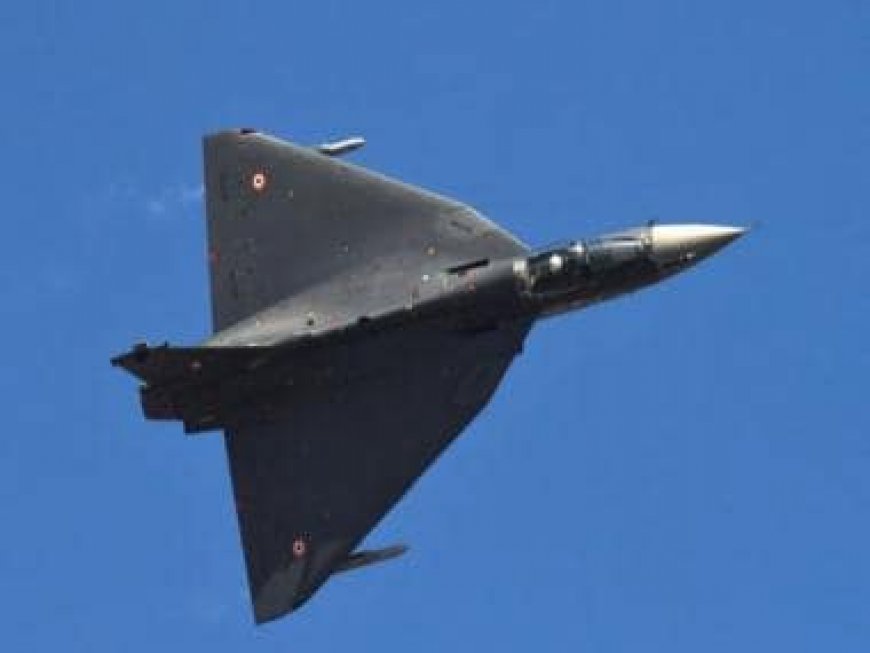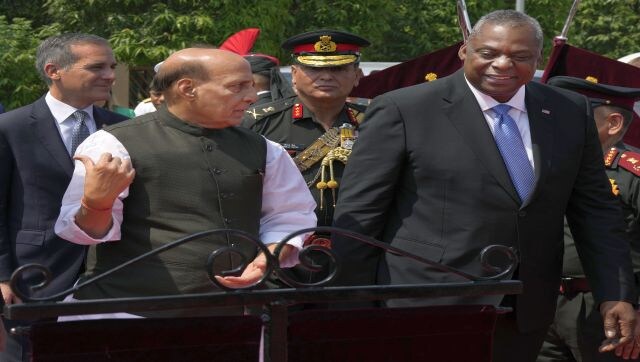Modi in US: What is the mega agreement which will allow fighter jets to be made in India?
Modi in US: What is the mega agreement which will allow fighter jets to be made in India?

American company General Electric announced on Thursday (22 June) that it has joined hands with India’s state-owned Hindustan Aeronautics Ltd to produce fighter jet engines for the Indian Air Force (IAF). Calling the pact ‘historic’, GE chairman H Lawrence Culp Jr said the agreement was “made possible by our longstanding partnership with India and HAL”.
The announcement came hours after Prime Minister Narendra Modi, who is in the United States for a state visit, met the GE chairman in Washington.
PM @narendramodi held productive discussions with CEO of @generalelectric, H. Lawrence Culp, Jr. They discussed GE’s greater technology collaboration to promote manufacturing in India. pic.twitter.com/v116lzVuaR
— PMO India (@PMOIndia) June 22, 2023
The deal is another indicator of improving military ties between the two countries, especially at a time when China is asserting its military prowess along the Line of Actual Control with India and in the South China seas.
Also read: Yoga, meal with the Bidens, meet with CEOs: PM Modi’s packed days during US visit
Amid Modi’s US visit, let’s take a closer look at this jet engine deal and why it is significant for New Delhi.
GE-HAL engine deal
GE’s memorandum of understanding with HAL includes the potential joint production of GE Aerospace’s F414 engines in India. “GE Aerospace continues to work with the US government to receive the necessary export authorization for this. The effort is part of the Indian Air Force’s Light Combat Aircraft Mk2 program,” GE Aerospace said in a statement. These engines will be used in the made-in-India Tejas Mark-2 fighter jets.
Once its production starts in India, the GE F414 will power all future fighter jets including the Tejas Mk II, Advanced Medium Combat Aircraft (AMCA) as well as the indigenous Twin Engine Deck Based Fighter (TEDBF) for the Indian Navy.

What makes the GE F414 engine so special though? It is the power behind the Boeing’s Super Hornets and the Gripen fighter jets. GE describes the F414 as an American afterburning turbofan engine in the 22,000-pound (98 kN) thrust class. It offers unrestricted engine performance on demand with rapid engine throttle response and zero throttle restrictions. Excellent afterburner light and stability ensure extra thrust is ready on demand when needed. Experts state that the F414 features the latest technologies, proving its versatility and hence, has become the engine of choice for an increasing number of advanced, next-generation combat aircraft.
The GE F414 is a derivative of the GE F404 engine, which was developed in the 1970s. It produces up to 18,000 pounds of thrust, which gives it the power to operate a variety of aircraft in a variety of missions. This engine is also designed for easy maintenance, which reduces the cost of ownership and it meets all current environmental regulations, and is designed to be even more environmentally friendly in the future.

The engine also uses an integrated electronic engine instrumentation; this provides real-time data on the engine’s performance that enables pilots to make informed decisions about the engine. Its wide chord, high-pressure compressor (HPC) provides greater efficiency and lower emissions than previous generation engines.
But this engine doesn’t come cheap. According to reports, GE’s F414 comes with a price tag of $3.71 million (Rs 30 crore).
History of the deal
In 2010, GE, which already supplies F404 engines for the Tejas jet, was selected to provide a more powerful version, the F414, for an updated version of the plane. The plan, according to some media reports, was for the US-based company to supply some engines initially before co-manufacturing them in India.
However, plans to transfer technology fell afoul of America’s strict technology export controls and the deal was placed on the backburner for years. It assumed significance again this year after India and the US announced new details of their newly unveiled Initiative on Critical and Emerging Technologies (iCET).
Since then, the deal has escalated. In May at the end of talks between National Security Advisor Ajit Doval and his American counterpart Jake Sullivan, it was confirmed that a request had been placed for the transfer of technology for the jet engine.

The deal received further impetus when US defence secretary Lloyd Austin met Defence Minister Rajnath Singh earlier this month and the two leaders chalked out the broad contours of the deal.
Significance of the deal
But why the hoopla over this deal? How important is this deal to New Delhi? If the deal goes through, it will be a boost for India-US defence ties. The military relations between the two countries have seen an uptick since 2014 and this will be a huge step in that direction.
Hailing the deal, the GE chairman and CEO said in a statement: “We are proud to play a role in advancing President Biden and Prime Minister Modi’s vision of closer coordination between the two nations. Our F414 engines are unmatched and will offer important economic and national security benefits for both countries as we help our customers produce the highest quality engines to meet the needs of their military fleet”.
It’s also highly significant because transfer of technology in this sphere is easier said than done, as News9Live reported. However, it is yet to be known to what extent the US will permit the transfer of technology under the agreement.
Since the jet engine was patented in 1930, there are only four countries across the globe that have mastered this technology for the production of combat jet engines – the United States, the United Kingdom, France and Russia.
Even China for all its advancements and military prowess, struggles to develop its jet engines for military jets and relies on Russia.
As Dr S Christopher, former Chairman, Defence Research and Development Organisation (DRDO), explained to News9Plus on why this is restricted to just a handful of countries, “The existing engine producers have developed it over the years with civil and military funding of many countries. But no one will invest in a country just starting out [with such tech development]. Private companies don’t think this is a viable business case. Governments cannot give sustained support for various reasons. On one side are the technical challenges, and on the other are the pressures from companies. Hence, it is not a pure case of technology insufficiency.”
Additionally, through the deal, the US wants to restrict New Delhi’s reliance on Russia for military aid. In fact, India depends on Russia for nearly half its military supplies, and has bought fighter jets, tanks, nuclear submarines and an aircraft carrier over the decades.
More importantly, the deal is also being seen as a counterbalance to China’s dominance in broader Asia. As Daniel Silverberg, managing director at Capstone and a former national security advisor told CNBC, “One policy objective of the US administration is to strengthen the capacity of the Indian military to play a key role in the counter-China effort.”
Richard Rossow at the Center for Strategic and International Studies, an independent US think tank, also echoed similar sentiments. Speaking to Wall Street Journal, he said, “India’s the only country that’s actually fighting with China. They can’t hold down the fort alone.”
Such a deal will also boost India’s jet producing capacity. As experts state that for India to fight a simultaneous two-front war against adversaries, it needs at least 756 fighter aircraft – or 42 squadrons. But at the moment, the Indian Air Force (IAF) currently operates only about 560 aircraft with a critical deficit of about 196 odd fighters.
As this deal requires transfer of technology, it will need approval from US Congress, with sources telling The Print that they don’t expect any issues there.
It’s important to note here that this isn’t the only big-ticket defence deal that was inked during Prime Minister Narendra Modi’s White House visit. There’s also the MQ-9 Reapers drone deal worth billions of dollars that will mostly be signed during this trip.
With inputs from agencies
Read all the Latest News, Trending News, Cricket News, Bollywood News,
India News and Entertainment News here. Follow us on Facebook, Twitter and Instagram.
What's Your Reaction?


























































